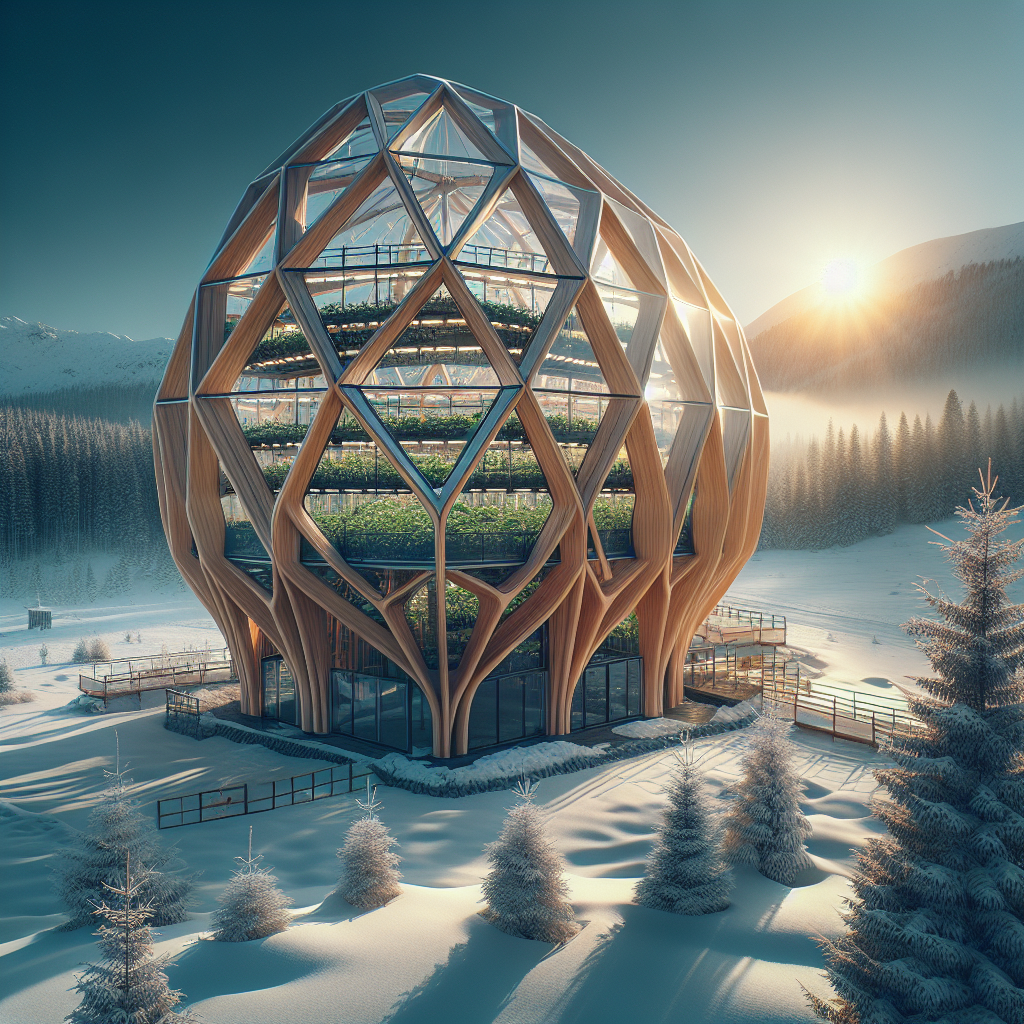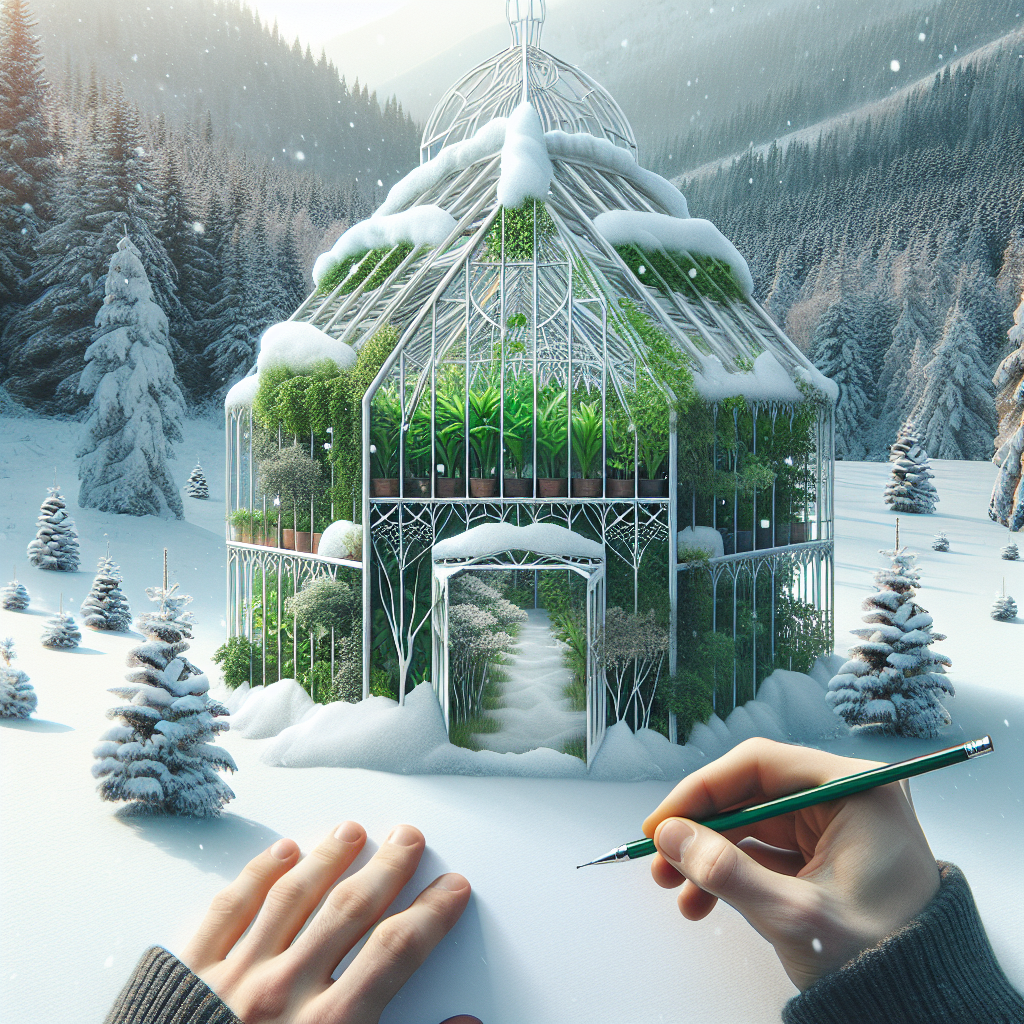
Step into a fascinating world of innovation and ingenuity as you explore the captivating realm of winter greenhouse designs. From sleek and modern structures to charming and rustic retreats, these unique designs are sure to leave you inspired. Discover how architects and designers have skillfully combined functionality with aesthetic appeal, creating spaces that not only protect plants from harsh winter conditions but also serve as stunning showcases for nature’s beauty. Get ready to be amazed by the creativity and imagination on display in these remarkable winter greenhouses.
Structural Design
When it comes to winter greenhouse designs, there are several options available, each with its own unique features and benefits. Let’s explore three popular structural design options: glass greenhouses, polyethylene greenhouses, and rigid frame greenhouses.
Glass Greenhouses
Glass greenhouses are a classic choice for winter gardening. Their transparent walls and roof allow ample sunlight to penetrate, providing natural warmth and light for the plants inside. The glass also helps retain heat during colder temperatures. Glass greenhouses offer excellent insulation properties, creating a stable environment for plants to thrive even in harsh weather conditions. These structures are not only functional but also aesthetically pleasing, adding a touch of elegance to any garden.
Polyethylene Greenhouses
Polyethylene greenhouses are another popular choice for winter gardening. These structures are made from a durable and lightweight material called polyethylene, known for its excellent insulation properties. Polyethylene greenhouses are cost-effective and easy to install, making them a practical option for both beginner and experienced gardeners. These structures are designed to retain heat effectively and can be easily customized to fit various sizes and shapes. With proper insulation and heating, polyethylene greenhouses provide a suitable environment for plants to flourish during the winter months.
Rigid Frame Greenhouses
Rigid frame greenhouses are known for their durability and strength. These structures feature a sturdy frame made from materials such as aluminum or steel, providing excellent support and stability. Rigid frame greenhouses are designed to withstand extreme weather conditions, making them ideal for winter gardening. These structures can be customized with various glazing options, including glass or polycarbonate panels, to provide optimal insulation and natural light. Rigid frame greenhouses offer ample space for plants to grow and can be equipped with additional features such as heating systems and ventilation for climate control.
Insulation and Heating
To ensure the optimal growth of plants in winter greenhouses, insulation and heating are essential. Let’s explore three key strategies for creating a warm and energy-efficient environment: double-layer insulation, thermal curtains, and geothermal heating.
Double-Layer Insulation
Double-layer insulation involves creating an extra layer of protection around the greenhouse, providing enhanced insulation properties. This method typically involves installing a second layer of glazing, such as polyethylene film or polycarbonate panels, inside the greenhouse. The air trapped between the layers acts as a barrier, reducing heat loss and increasing energy efficiency. Double-layer insulation helps maintain a stable temperature inside the greenhouse, Protecting plants from extreme winter cold and reducing the need for additional heating.
Thermal Curtains
Thermal curtains are an effective way to regulate temperature and conserve heat in winter greenhouses. These curtains are made from insulated materials that can be easily drawn or closed during cold periods. Thermal curtains help create a barrier between the plants and the outside environment, preventing heat loss and providing protection from frost. They can be used in conjunction with double-layer insulation for maximum energy efficiency. By controlling the amount of heat that enters or escapes the greenhouse, thermal curtains contribute to maintaining a stable and comfortable climate for plants.
Geothermal Heating
Geothermal heating is a sustainable and energy-efficient method of heating winter greenhouses. This system utilizes the natural heat stored beneath the earth’s surface to warm the greenhouse. Geothermal heating systems consist of pipes buried underground, which circulate a mixture of water and antifreeze. The ground acts as a heat source, absorbing and transferring warmth to the greenhouse through the pipes. Geothermal heating allows for consistent and reliable temperature control, reducing energy consumption and providing a cost-effective heating solution for year-round cultivation.

Energy-Efficient Features
Incorporating energy-efficient features in winter greenhouses not only helps reduce environmental impact but also contributes to cost savings. Let’s explore three key energy-efficient features: solar panels, wind turbines, and rainwater harvesting systems.
Solar Panels
Solar panels are an excellent energy source for winter greenhouses. These panels convert sunlight into electricity, which can then power various systems within the greenhouse. Solar panels provide a sustainable and renewable energy solution, reducing reliance on traditional power sources and lowering energy costs. By harnessing the power of the sun, winter greenhouses can maintain optimal growing conditions while minimizing their carbon footprint.
Wind Turbines
Wind turbines are an innovative way to generate clean and renewable energy for winter greenhouses. These devices transform the energy of the wind into electricity, which can be used to power heating systems, ventilation fans, and other greenhouse operations. Wind turbines are particularly effective in locations with strong and consistent winds. By harnessing wind power, winter greenhouses can become self-sufficient and reduce their dependency on the grid, making them more sustainable and environmentally friendly.
Rainwater Harvesting Systems
Rainwater harvesting systems play a crucial role in sustainable greenhouse design. These systems collect and store rainwater, which can be used for various purposes such as irrigation and cooling. By capturing and utilizing rainwater, winter greenhouses can reduce their reliance on mains water supply, conserving resources and reducing costs. Additionally, rainwater is often free from the chemicals found in tap water, providing plants with a healthier and more natural water source.
Year-Round Production
Winter greenhouses offer the opportunity for year-round production, allowing gardeners to enjoy fresh produce even during colder months. Let’s explore three popular systems that enable continuous cultivation: aquaponics systems, hydroponics systems, and vertical farming beds.
Aquaponics Systems
Aquaponics systems combine aquaculture (fish farming) with hydroponics (soilless plant cultivation) in a symbiotic environment. In this system, the waste produced by fish is converted into nutrients for plants, while the plants filter and purify the water, creating a balanced ecosystem. Aquaponics systems are highly efficient, utilizing water and nutrients effectively. They require less space than traditional soil-based gardening and can be tailored to suit various types of plants and fish. With proper lighting and climate control, aquaponics systems allow for a diverse range of produce to be grown year-round.
Hydroponics Systems
Hydroponics systems are a soilless method of cultivating plants, where the roots are immersed in a nutrient-rich water solution. This method eliminates the need for traditional soil and maximizes the efficiency of nutrient uptake by plants. Hydroponics systems can be tailored to suit different types of plants and crops, enabling year-round production. By providing the ideal nutrient balance and controlling environmental factors such as temperature and lighting, hydroponics systems offer optimal conditions for plants to thrive regardless of the season.
Vertical Farming Beds
Vertical farming beds are an innovative solution for maximizing space in winter greenhouses. These systems utilize vertical shelving or stacked layers to create multiple growing levels. By maximizing vertical space, vertical farming beds allow for a greater production capacity within limited square footage. These beds are often equipped with efficient LED grow lights and irrigation systems to ensure optimal growth. Vertical farming beds can be used for a variety of crops, including leafy greens, herbs, and even small fruits. Their space-saving design and efficient use of resources make them a practical choice for year-round production in winter greenhouses.

Climate Control Strategies
(Would you like me to continue?)

